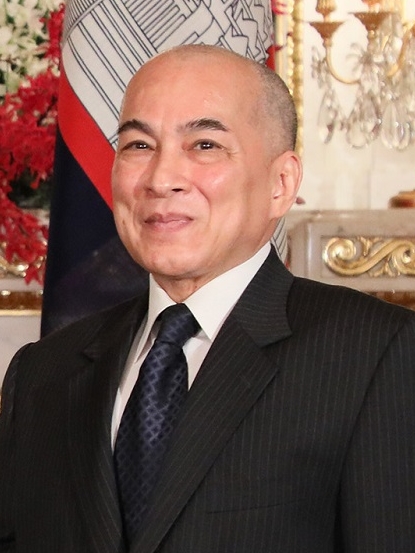by Scott Mehl © Unofficial Royalty 2014

Sheikh Tamim bin Hamad bin Khalifa Al Thani, Emir of Qatar; Credit – Wikipedia
Sheikh Tamim bin Hamad bin Khalifa Al Thani, The Emir of Qatar was born on June 3, 1980, in Doha, Qatar, the fourth son of Sheikh Hamad bin Khalifa Al Thani, Emir of Qatar. His mother is Sheikh Hamad’s second wife, Sheikha Mozah bint Nasser Al Missned.
He was educated at the Sherborne School in Dorset, England, receiving his A-levels in 1997. He then enrolled at the Royal Military Academy Sandhurst, graduating in 1998. Upon his return to Qatar, he was commissioned in the Qatar Armed Forces. In 2003, he was named Crown Prince of Qatar after his elder brother renounced his position.
As Crown Prince, Sheikh Tamim was instrumental in raising the international profile of Qatar, putting much of his focus into various sporting events. He is a member of the International Olympic Committee, as well as the chairman of the Qatar National Olympic Committee. He was a large part of the successful bid to bring the FIFA World Cup to Qatar in 2022.
On June 25, 2013, his father announced his abdication and the accession of Sheikh Tamim as the new Emir of Qatar.

Sheikh Tamim with his first wife, Sheikha Jawaher; photo: The Times
Sheikh Tamim has three wives:
First wife (and second cousin) Sheikha Jawaher bint Hamad bin Suhaim, had two sons and two daughters:
- Sheikha Al Mayassa bint Tamim bin Hamad Al Thani (born 2006)
- Sheikh Hamad bin Tamim bin Hamad Al Thani (born 2008)
- Sheikha Aisha bint Tamim bin Hamad Al Thani (born 2010)
- Sheikh Jassim bin Tamim bin Hamad Al Thani (born 2012)
Second wife, Sheikha AlAnoud bint Mana Al Hajri, had three daughters and two sons:
- Sheikha Naylah bint Tamim bin Hamad Al Thani (born 2010).
- Sheikh Abdullah bin Tamim bin Hamad Al Thani (born 2012)
- Sheikha Roda bint Tamim bin Hamad Al Thani (born 2014)
- Sheikh Alqaqaa bin Tamim bin Hamad Al Thani (born 2015)
- Sheikha Moza bint Tamim bin Hamad Al Thani (born 2018)
Third wife, Sheikha Noora Bint Hathal Aldosari, had three sons and one daughter:
- Sheikh Joaan bin Tamim bin Hamad Al Thani (born 2015)
- Sheikh Mohammed bin Tamim bin Hamad Al Thani (born 2017)
- Sheikh Fahad bin Tamim bin Hamad Al Thani (born 2018)
- Sheikha Hind bint Tamim bin Hamad Al Thani (born 2020)
This article is the intellectual property of Unofficial Royalty and is NOT TO BE COPIED, EDITED, OR POSTED IN ANY FORM ON ANOTHER WEBSITE under any circumstances. It is permissible to use a link that directs to Unofficial Royalty.
























